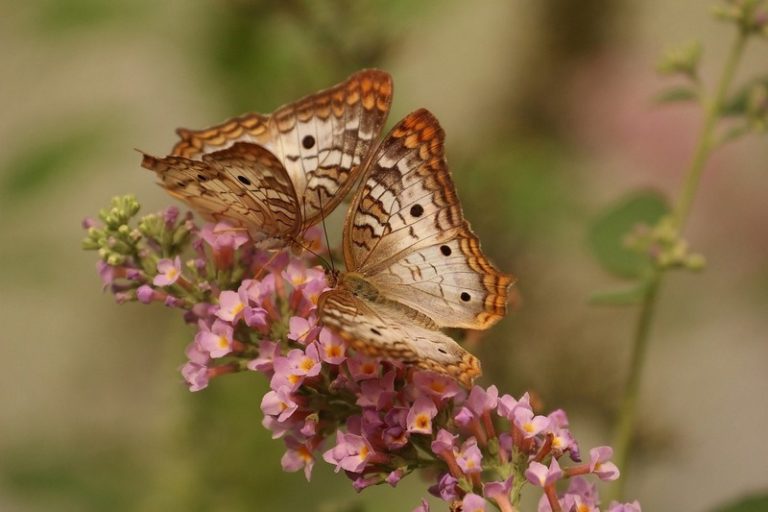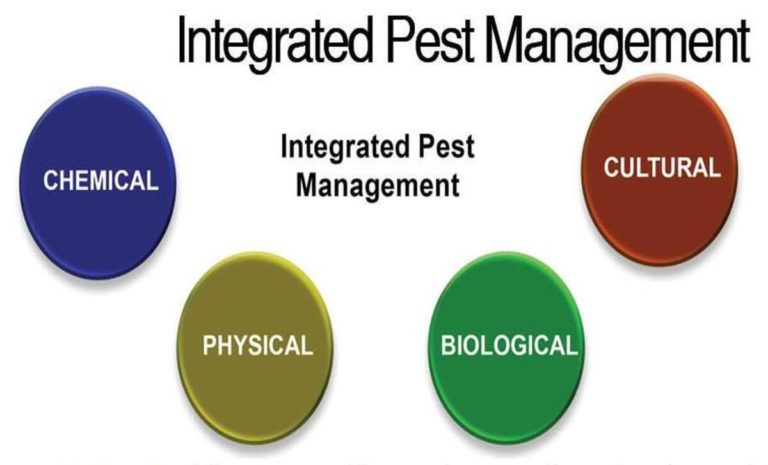Insecticides in Agriculture: Maximizing Crop Yields While Minimizing Risks
Insecticides are chemicals used to control insects and other pests that can damage crops, spread disease, and cause discomfort to humans and animals. Insecticides come in many forms, including sprays, dusts, and baits, and are used in a variety of settings, from agriculture to public health to household pest control.
Types of Insecticides:
There are several types of insecticides available for controlling pests. The following are the most common types of insecticides:
Contact Insecticides:
These insecticides kill pests on contact. They are usually sprayed directly onto the pest or the area where the pest is located. Contact insecticides include pyrethroids, carbamates, and organophosphates.
Systemic Insecticides:
These insecticides are absorbed by the plant and travel through the sap. When pests feed on the plant, they ingest the insecticide and are killed. Systemic insecticides include neonicotinoids and imidacloprid.
Fumigant Insecticides:
These insecticides release gas into an enclosed space, killing pests in the area. Fumigant insecticides include methyl bromide and phosphine gas.
Repellent Insecticides:
These insecticides do not kill pests but repel them. Repellent insecticides include DEET and picaridin.
Biological Insecticides:
These insecticides use natural predators or pathogens to control pests. Biological insecticides include bacteria, fungi, and viruses.
Insect Growth Regulators:
These insecticides stop insects from growing up and reproducing because they mess up their growth and development. Insect growth regulators include chitin synthesis inhibitors and juvenile hormone analogs.
Each type of insecticide has its own pros and cons, and choosing the right one depends on a number of things, like the type of pest, where it is, and how bad the infestation is. When using insecticides, it is important to read the label and follow the directions carefully to make sure they are safe and work well.
How Insecticides Work
Insecticides work by targeting specific physiological or biochemical processes in insects, disrupting their normal functions and leading to their death. The way an insecticide works is called its “mode of action.” It means how or what it does to kill insects.
There are several modes of action for insecticides, including:
- Neurotoxins: These insecticides attack the nervous systems of insects, stopping nerve impulses from being sent and killing the insects. Examples of neurotoxins include pyrethroids and organophosphates.
- Insect Growth Regulators: These insecticides disrupt the growth and development of insects, preventing them from reaching adulthood and reproducing. Insect growth regulators include chitin synthesis inhibitors and juvenile hormone analogs.
- Metabolic Inhibitors: These insecticides interfere with specific metabolic processes in insects, such as the production of energy or the synthesis of proteins. Examples of metabolic inhibitors include carbamates and organophosphates.
- Repellents: These bug sprays don’t kill bugs, but they keep them away. Some insecticides that keep bugs away are DEET and picaridin.
If you put an insecticide on an insect, it can eat it, take it in through its skin, or breathe it in. Once the insecticide is inside the insect, it starts to interact with its target. This causes normal physiological or biochemical processes to break down. Depending on how they work and what kind of insect they are trying to kill, insecticides can have immediate or delayed effects.
Follow the directions on the label to make sure that insecticides work and are safe to use. If insecticides are used too much or in the wrong way, they can stop working on insects, pollute the environment, and hurt organisms that are not the target.
Common Uses of Insecticides
Insecticides are used to control pests that can cause damage to crops, transmit diseases, or infest homes and buildings. The following are some of the most common uses of insecticides:
Agricultural Pest Control:
Pests can cause substantial economic losses; hence insecticides are employed to protect crops from them. Aphids, beetles, and caterpillars are all insects, but mites and nematodes also fall under the category of crop pests. Insecticides, in the form of sprays, granules, or even seed treatments, are used to get rid of these unwanted visitors.
Public Health Pest Control:
Pests that spread diseases, like mosquitoes, fleas, and ticks, are killed with insecticides. Malaria, dengue fever, and Lyme disease can all be spread by these pests. Different kinds of insecticides, like sprays and treated bed nets, are used to get rid of these pests.
Structural Pest Control:
Insecticides are used to get rid of insects and other pests including ants, cockroaches, and termites that can cause damage to structures. Insecticides, in the form of baits, sprays, and dusts, are administered to eliminate these nuisances.
Forestry Pest Control:
Insecticides are used to keep pests that can hurt trees from getting to trees. Insects like bark beetles and gypsy moths, as well as diseases spread by fungi, are some types of forest pests. Different kinds of insecticides, like sprays and trunk injections, are used to get rid of these pests.
Veterinary Pest Control:
Insecticides kill fleas, ticks, and mites that infest animals and pets. Sprays, dips, and collars of pesticides eliminate these pests.
Insecticides protect crops, health, and structures against pests. Insecticides can harm the environment and non-target creatures, so use them properly and according to the label.
Benefits of Insecticides
Insecticides have several benefits, including:
Insecticides protect crops from pests that can cause big economic losses. Insecticides increase crop yields and improve the quality of agricultural goods by getting rid of pests.
Disease Control: Insecticides are used to keep disease-carrying pests like mosquitoes, fleas, and ticks at bay. Insecticides assist prevent the spread of illnesses such as malaria, dengue fever, and Lyme disease by eradicating these pests.
Public Health Protection: Insecticides are used to manage pests that can be harmful to one’s health, such as cockroaches and rodents. Insecticides assist prevent the spread of illnesses and lower the risk of allergic responses by controlling these pests.
Protection of Livestock and Pets: Pests like cockroaches and rats can pose serious health risks and need to be eradicated with insecticides. Insecticides aid in halting the transmission of disease and decreasing the likelihood of allergic responses by eliminating these nuisance insects.
Environmental Protection: Targeted use of insecticides to manage specific pests while reducing their impact on non-target creatures and the environment is possible. We can decrease the danger of harm to beneficial insects, wildlife, and ecosystems by use pesticides carefully.
While insecticides offer several benefits, it is important to use them responsibly and according to label instructions. If insecticides are used too much or in the wrong way, they can cause insects to stop responding to them, pollute the environment, and hurt organisms that are not the target. By using insecticides responsibly, we can maximize their benefits while minimizing their potential risks.
Environmental Impact of Insecticides
Depending on how they are used and applied, insecticides can have both good and bad effects on the environment. Some of the negative environmental impacts associated with insecticides include:
Harm to Non-Target Organisms: Insecticides can harm beneficial insects such as pollinators, natural enemies of pests, and other wildlife that may be exposed to the insecticide. This can disrupt the ecosystem and reduce biodiversity.
Groundwater and Surface Water Contamination: Insecticides can leach into groundwater and surface water, leading to contamination of water resources. This can harm aquatic life and have negative impacts on human health.
Residues in Food: Insecticides can leave residues on food crops, which can lead to human exposure to these chemicals through consumption. Long-term exposure to insecticides in food has been associated with negative health impacts.
Resistance Development: Overuse or abuse of pesticides can cause pests to develop insecticide resistance, which diminishes their efficacy and increases the use of more harmful insecticides.
To keep insecticides from hurting the environment too much, it’s important to use them in a responsible way and follow the directions on the label.
Choosing and Using Insecticides
It is crucial to choose and use insecticides in a safe and responsible manner to prevent harm to people and the environment. Selecting and applying insecticides can be an excellent approach to get rid of pests and safeguard crops. While selecting and utilizing pesticides, keep the following points in mind:
- Identify the Pettit’s: critical to accurately identify the pest and comprehend its biology and behavior before selecting a pesticide. This will assist you in choosing the most efficient pesticide and use it properly.
- Select the Right Insecticide: There are many distinct kinds of insecticides, each with its own method of action, strengths, and drawbacks. It is essential to pick a pesticide that is effective against the pest you wish to eliminate while causing the fewest adverse effects on other animals and the environment.
- Read the Label: Always read the label on a pesticide before applying it. Important details such as how much to use and when to use it, as well as instructions for safe handling, are included. If you care about your health and the environment, you must follow the directions on the label.
Apply at the Right Time:
When handled properly, insecticides are most effective and least harmful. Insecticides function best when the target pest is most susceptible and meteorological circumstances are ideal.
Use Personal Protective Equipment:
Use of personal protective equipment (PPE), such as gloves, goggles, and respiratory protection, is crucial while handling and spraying pesticides. This will lessen the chance that you’ll be exposed to the pesticide and suffer health effects.
Dispose of Unused Insecticides Safely:
To avoid contaminating the environment, unused pesticides and their containers should be disposed of carefully. For advice on how to properly dispose of hazardous substances, consult the label instructions or get in touch with your neighborhood waste management facility.
We can efficiently manage pests and safeguard our crops while limiting the effects on human health and the environment by selecting and utilizing pesticides ethically and safely.
Conclusion
Using insecticides to get rid of pests and safeguard crops, people’s health, and houses from harm is a terrific idea. Nonetheless, it’s crucial to apply pesticides responsibly to avoid harming the environment or other animals.
The adoption of Integrated Pest Management solutions can assist decrease the usage of pesticides and create a healthier ecosystem. The future of pest control is heading towards more sustainable and ecologically friendly options.
FAQ:
Q: What are insecticides?
A: Insecticides are chemicals that are designed to kill or control insects and other arthropods that are considered pests.
Q: How do insecticides work?
A: Insecticides work in a variety of ways depending on their mode of action. Some insecticides work by disrupting the nervous system of insects, while others interfere with the metabolism or development of the pest.
Q: What are the different types of insecticides?
A: There are many types of insecticides available, including organophosphates, carbamates, pyrethroids, neonicotinoids, and biological insecticides.
Q: Are insecticides safe to use?
A: Insecticides can be safe to use when handled and applied properly. However, it is important to follow label instructions and take precautions to avoid exposure to the chemicals.
Q: What are the environmental impacts of insecticides?
A: Insecticides can have negative impacts on the environment, including contamination of soil and water, harm to non-target organisms such as bees and butterflies, and the development of insecticide-resistant pests.
Q: How do I choose the right insecticide for my needs?
A: To choose the right insecticide, it is important to correctly identify the pest, understand its biology and behavior, and select an insecticide that is effective against the target pest and has the least impact on non-target organisms and the environment.
Q: Can I use natural alternatives to insecticides?
A: Yes, there are natural alternatives to insecticides, including biological controls such as beneficial insects and microbial pesticides, as well as cultural controls such as crop rotation and sanitation practices.
Q: How can I dispose of unused insecticides?
A: Unused insecticides and their containers should be disposed of safely to prevent contamination of the environment. Follow label instructions for proper disposal, or contact your local waste management facility for guidance on how to dispose of these chemicals safely.
Also Read:
Herbicides in Agriculture: Maximizing Crop Yield and Profitability







